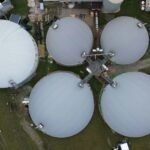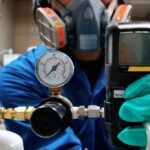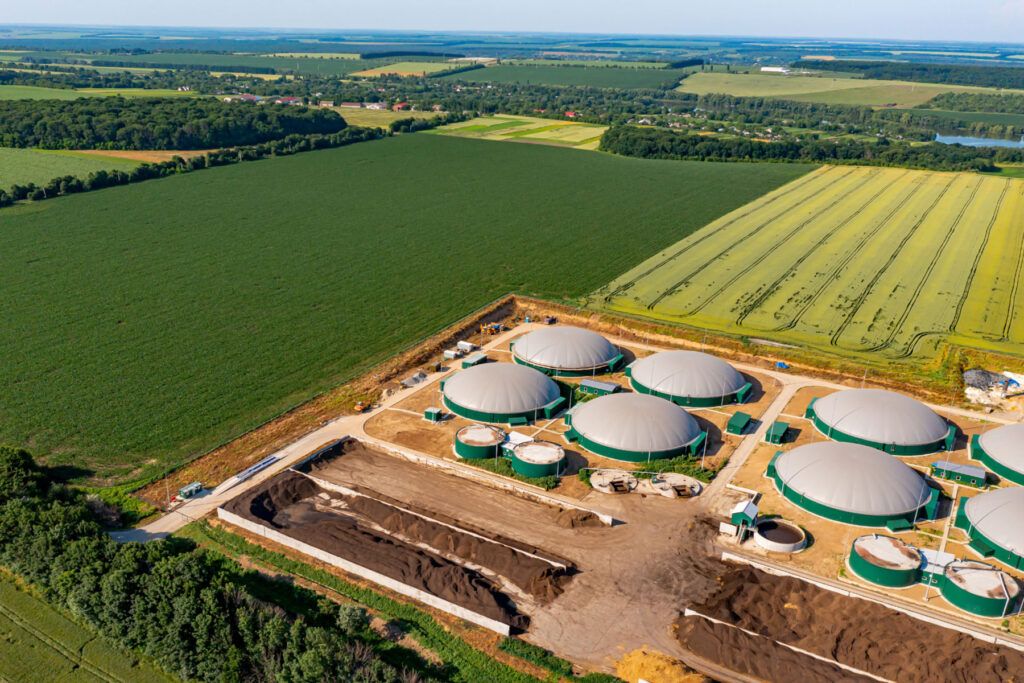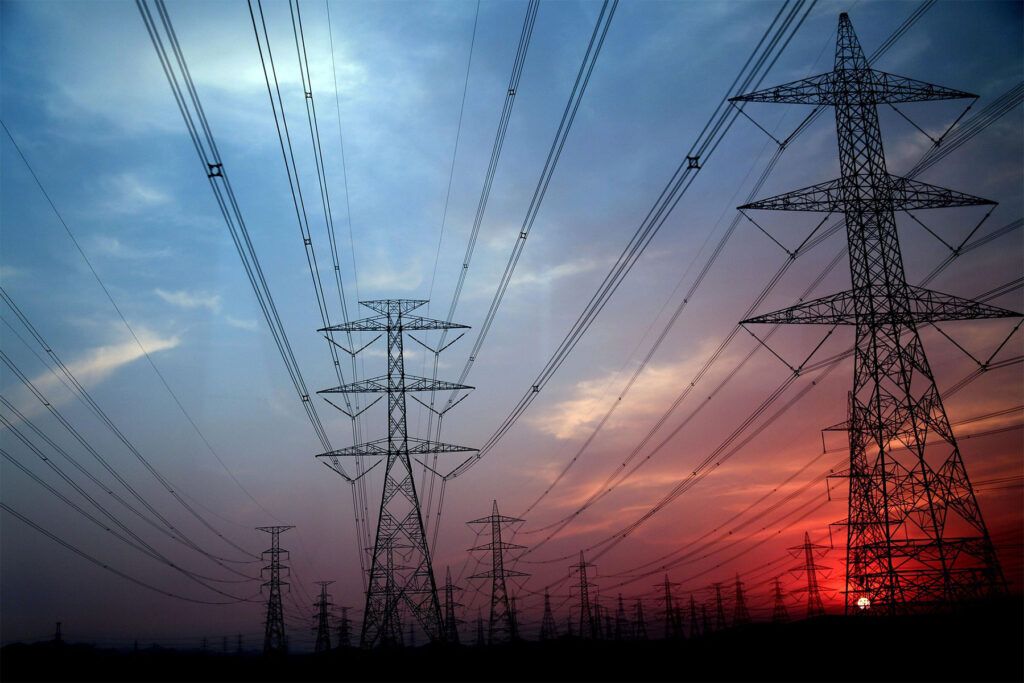Industrial emissions control has become one of the most urgent environmental challenges of our time due to its critical impact on public health. Respiratory diseases, cardiovascular conditions, and cancer are directly linked to exposure to air pollutantsAir pollution caused by atmospheric contaminants is one of the most critical and complex environmental problems we face today, both because of its global r...
Read more, resulting in growing morbidity through the development of acute and chronic illnesses and more than 7 million premature deaths globally each year.
To achieve a sustainable future, it is essential to mitigate air pollution. It is urgent and imperative to continue advancing, as in recent decades, towards greater efficiency in industrial processes and strict emissions control. In this context, continuous and real-time monitoring of industrial emissions, using advanced technological solutions developed by specialized companies such as Kunak, emerges as an essential tool to comply with increasingly strict regulations and protect both the environment and human health.
What are industrial emissions?
Industrial emissions refer to pollutants released into the air by factories and industrial processes. They include gases, particles, and chemicals that can affect both human health and the environment. These pollutants disperse not only in the air but also in water and soil, causing significant environmental alterations such as the irreversible degradation of soil fertility and the massive contamination of water bodies. These impacts threaten biodiversity and the availability of essential natural resources for life.
Pollutant emissions from industry, including gases such as methane (CH₄), carbon dioxide (CO₂), nitrogen oxides (NOₓ), particulate matter (PM)Atmospheric particulate matter are microscopic elements suspended in the air, consisting of solid and liquid substances. They have a wide range of sizes an...
Read more, and volatile organic compounds (VOCs), are released into the atmosphere as by-products of industrial processes, energy operations, and manufacturing, transportation, and storage activities in industrial facilities. These substances, which are highly reactive and persistent, have a devastating effect on air qualityAir quality refers to the state of the air we breathe and its composition in terms of pollutants present in the atmosphere. It is considered good when poll...
Read more, exacerbating global phenomena such as climate change, ecosystem acidification through acid rain, and the formation of photochemical smogSmog, beyond that dense fog
Smog is a mixture of air pollutants that accumulate in the atmosphere, especially in urban areas. This phenomenon is character...
Read more.
Moreover, chronic exposure to these pollutants is directly associated with serious impacts on human health, including an increased incidence of chronic respiratory diseases, cardiovascular disorders, and oncological conditions. The accumulation of scientific evidence shows that industrial emissions not only degrade the environment but also pose a critical threat to public health.
Air Quality Innovation in Just 1 Click
Stay informed about the air you breathe!
Subscribe to our newsletter to receive the latest updates on environmental monitoring technology, air quality studies, and more.
Main sources of emissions
Industrial air pollution comes from a wide variety of emission sources. The main ones include:
Use of fossil fuels
In combustion processes, the use of oil and natural gas in boilers, furnaces, and energy generation systems during manufacturing leads to emissions of CO₂, NOx, SO₂ (sulfur dioxide), and suspended particles.
Chemical and manufacturing processes
Certain industrial emissions, such as those from production of steel and metal, the chemical and petrochemical industry, cement manufacturing, and the production of plastics and fertilizers, significantly contribute to the release of pollutants that degrade air quality. These include gases (methane, carbon dioxide, sulfur dioxide, heavy metals, nitrous oxide, ammonia, and volatile organic compounds).
Use of refrigerant gases and solvents
Fluorinated gases with a high global warming potential are used in industrial refrigeration and electronic processes.
Additionally, the release of volatile organic compounds from solvents in paints, adhesives, and industrial cleaning products causes these substances to evaporate easily, turning into gases at room temperature. They readily react with other atmospheric gases, contributing to smog formation and worsening overall air quality.
Industrial byproducts and waste
Processes involving the emission of methane and other hazardous waste, such as dioxins and furans, released by industrial landfills and the burning of hazardous waste or untreated open-air disposal.
Mining Extraction
Mines and natural resource quarries are a major source of industrial emissions, generating methane, dust, and suspended particles.
Types of Industrial Emissions
The main industrial emissions that harm air quality and require priority pollutant reduction are:
Greenhouse gasesWhile the concentration of carbon dioxide (CO2) in the atmosphere has been steadily and rapidly increasing in recent decades, in May 2025, CO2 surpassed 43...
Read more
Carbon dioxide (CO₂)
The second most potent greenhouse gas, primarily from fossil fuel use. Alone, it is one of the main accelerators of global warming and climate change.
Methane (CH₄)
The production and transport of coal, oil, and natural gas, as well as certain industrial processes, release this most potent greenhouse gas.
Other pollutant gases
Nitrogen oxides (NOx)
Result from high-temperature industrial reactions and vehicle combustion. They contribute to smog and acid rain.
Hydrogen sulfide (H₂S)
A pollutant gas known for its rotten egg odor, released in industrial processes like oil refining.
Suspended substances
Volatile Organic Compounds (VOCs)
Their presence in the air makes them precursors to harmful tropospheric ozoneTropospheric ozone (O3) or ground-level ozone is a gas found in the lowest layer of the Earth's atmosphere, the troposphere, which extends up to 10 kilomet...
Read more.
Suspended Particles (PM₁, PM₂.₅, PM₁₀)
Generated during combustion from stationary and mobile sources, they can penetrate deep into the lungs, causing cardiovascular and respiratory problems.
Odorous emissions
These pollutants degrade air quality and severely impact environmental conditions, particularly in industrial areas. They are most relevant in agriculture and livestock, solid waste treatment, wastewater treatment plants (WWTPs), and the petrochemical industry.
Their monitoring and control are a priority because they harm the well-being of residents near industrial zones, causing headaches, nausea, vomiting, insomnia, and respiratory issues.

Industrial emission regulations
Industrial emission regulations establish limits for pollutants emitted by industrial sources with the objective of protecting human health and the environment. At international and regional levels, multiple regulations exist to reduce air pollution through standards and control mechanisms.
International and European legislation
- Kyoto Protocol (1997): Binding commitment for industrialized countries to reduce greenhouse gas (GHG) emissions.
- Paris Agreement (2015): Aims to limit global temperature rise to below 2°C and strengthen climate resilience.
- Geneva Convention (CLRTAP, 1979): Regulates transboundary pollution in Europe and North America.
- Montreal Protocol (1987): Has significantly reduced the use of ozone-depleting substances (ODS), such as CFCs.
- Industrial Emissions Directive (IED, 2010/75/EU): Regulates emissions from industrial installations in the European Union through the application of Best Available Techniques (BAT).
- REACH Regulation (2006): Requires industry to assess and manage risks of chemical substances used in their processes.
- Minamata Convention (2013): Regulates mercury use in industry, promoting safer alternatives.
- United Nations Environment Programme (UNEP): Promotes sustainable practices for reducing industrial pollution in developing countries.
- Clean Air Act (1970): Controls emissions from industrial and mobile sources through National Ambient Air Quality Standards (NAAQS).
- ISO standards:
-
- ISO 14001:2015: Improves companies’ environmental management.
- ISO 50001:2011: Optimizes energy management to reduce GHG emissions.
Regulations in Spanish-speaking countries
Spain
As an EU member, it implements the IED Directive, complemented by national regulations such as:
- Air Quality Law 34/2007: Imposes stricter limits for pollutants like SO₂, NOₓ, and suspended particles.
- PRTR-Spain Registry: Provides detailed information on emission sources and industrial pollutants.
- Regional regulations: Some autonomous communities, like Catalonia, have established additional restrictions for specific sectors.
Latin America
Chile:
- Supreme Decree No. 28 (2022): Regulates emissions from thermoelectric plants with standards aligned with OECD.
- Climate Change Framework Law (2022): Requires industries to report their emissions under a scheme similar to the EU Emissions Trading System (EU ETS).
In conclusion, industrial emission regulations are key tools for reducing and controlling pollution. Their implementation ensures environmental protection and public health, promoting the adoption of sustainable technologies such as emission monitoring and continuous improvement in industrial environmental management.
Technologies for industrial emission control
Controlling industrial emissions has become a global priority. As major generators of air pollutants, greenhouse gases, and harmful particles, industries face the challenge of adopting technologies that reduce their atmospheric pollutants while preserving air quality in their surroundings.
The environmental management of facilities through continuous, real-time monitoring of their emissions doesn’t compromise their competitiveness. On the contrary, it improves their environmental performance indicators. Among the available control, measurement, and monitoring techniques are:
Capture and treatment technologies
These systems range from physical methods like filters and precipitators to chemical and biological solutions for treating and reducing industrial pollutants before they’re released into the atmosphere.
Continuous monitoring and measurement technologies
Monitoring stations equipped with advanced air quality sensorMeasuring air quality is essential for improving human and environmental health. Changes in the natural composition of the air we breathe are common in ind...
Read mores, such as those provided by Kunak, are valuable tools for controlling industrial emissions. These systems perform continuous, real-time monitoring of pollutants, providing a detailed and up-to-date picture of air quality through cloud-based data analysis and the generation of detailed reports. This information is vital for identifying trends, alerting during high pollution episodes and valuating the effectiveness of implemented measures
The usefulness of these rigorous air monitoring stations, based on sensors for analyzing different pollutants, goes beyond technology – they become allies of public health. They are competitive, low-cost, energy-efficient systems that, thanks to their wireless, real-time communication, facilitate early warning and enable rapid response to environmental emergencies. They also promote transparency and public awareness.
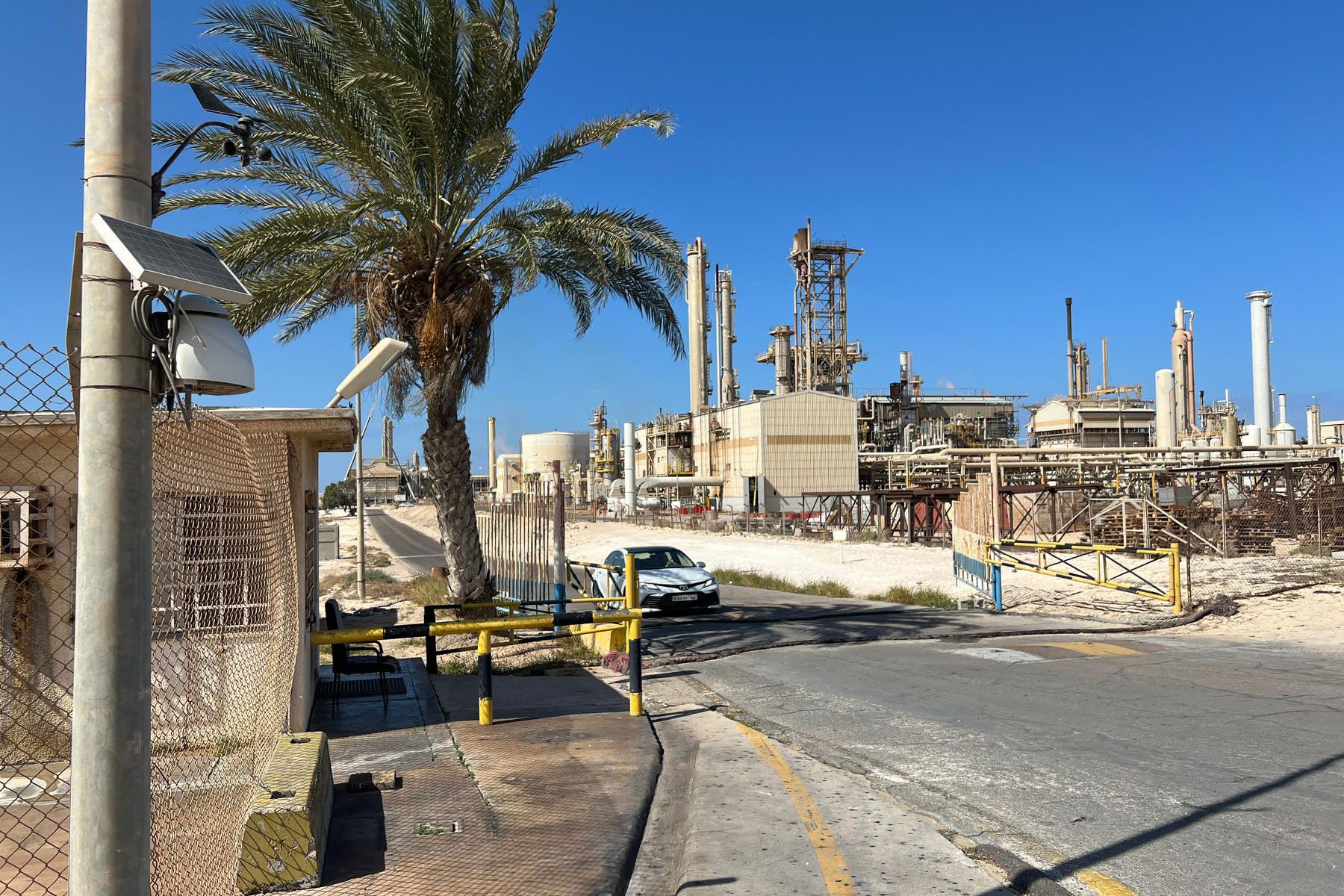
Air quality monitoring network at Lifeco’s fertiliser plant in Libya – Kunak
Success stories in industrial emission control
At Kunak, we have extensive experience in industrial emission control. To demonstrate its suitability, below are some success stories:
Food processing plant in Singapore
Using Kunak’s advanced sensors, an air quality monitoringControlling air quality is an essential task in order to enjoy optimal environmental conditions for healthy human development and to keep the environment i...
Read more system has been implemented in the demanding environment of the food industry. It measures volatile organic compounds, ammonia, and suspended particles in real time. The solution enables the company to quickly detect abnormal emissions, optimize its processes, and ensure regulatory compliance, improving both environmental safety and operational efficiency.
Fertilizer plant in Libya
Kunak has deployed its air quality monitoring system at Lifeco’s fertilizer plant in Libya, using advanced sensors to measure ammonia, hydrogen sulfide, and particulate matter in real time. The solution identifies leaks, optimizes industrial processes, and reduces emissions. Overall, it’s an air pollution control system that ensures regulatory compliance and improves environmental safety.
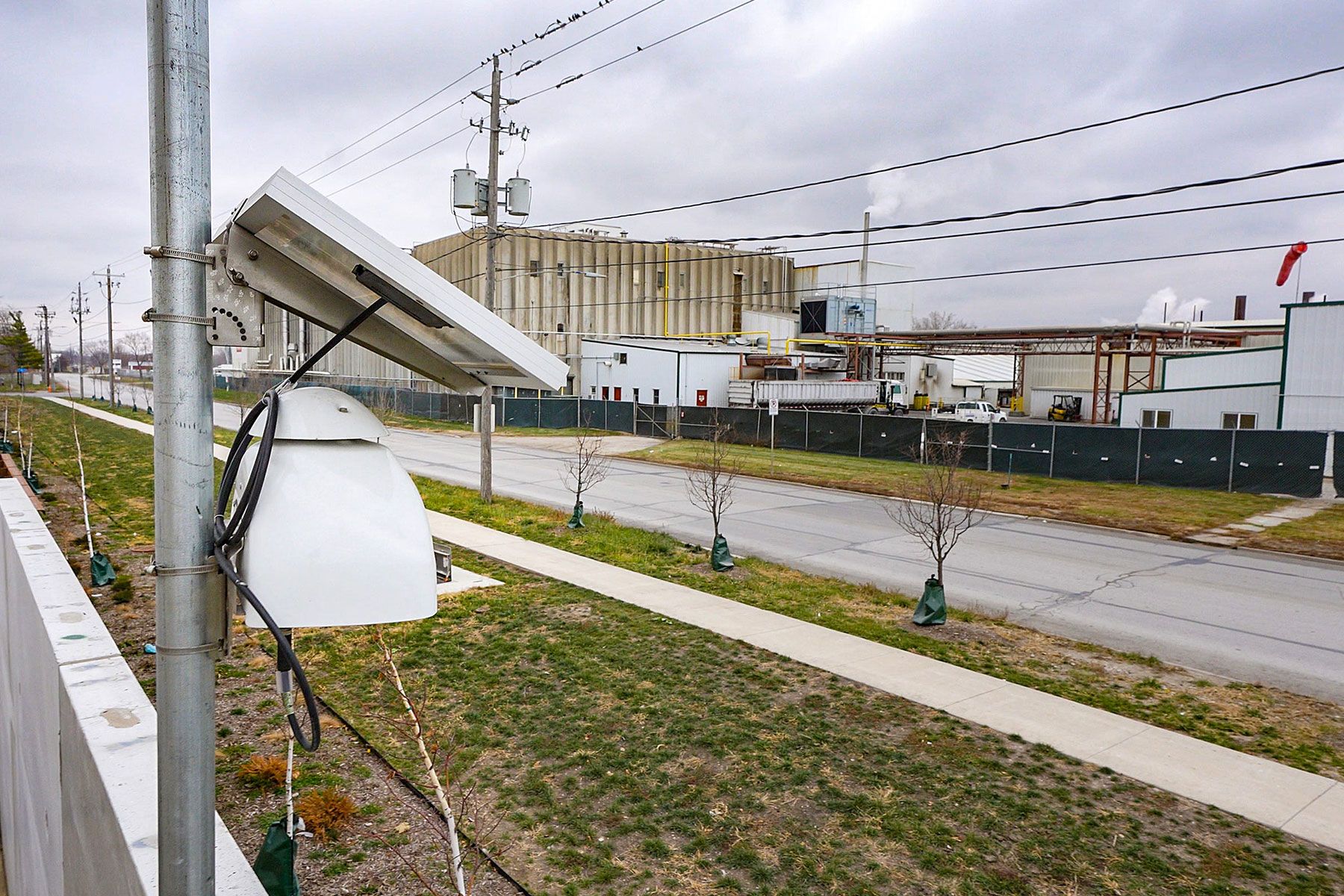
Odor Pollution Control Network in Des Moines, Iowa – Kunak
Odor control in Des Moines, Iowa
The solution developed by Kunak in Des Moines, Iowa (USA), in collaboration with Envirosuite, controls odor pollution from industrial plants and treatment facilities. By deploying advanced sensors at strategic points in the city, hydrogen sulfide and volatile organic compounds are measured, along with weather conditions. Thus, the monitoring system provides real-time data to identify odor sources and take corrective actions that improve environmental management, ensure compliance, and reduce citizen complaints.
Benefits of emission control for industry and environment
Controlling industrial emissions is not just an obligation but a strategic opportunity offering multiple benefits for both companies and the planet. The strategic advantages of monitoring air quality and controlling emissions before they reach the atmosphere and cause environmental impact are:
- Reduced environmental impact: Implementing technological innovation minimizes environmental impact by reducing pollutant release, optimizing processes, and increasing production efficiency.
- Early anomaly detection: Having an emission monitoring system allows for early identification of irregularities in production processes. These anomalies often generate leaks or atypical emissions that don’t occur under normal operating conditions, enabling quick and effective response.
- Improved air quality and ecosystem protection: Reducing toxic gases and particulate matter improves air quality and prevents serious damage like soil and water acidification, preserving ecosystems and biodiversity.
- Regulatory compliance and operational efficiency: Adhering to environmental regulations avoids penalties, as well as unnecessary use of resources (raw materials and energy) and costs derived from treating produced emissions.
- Competitive and reputational advantages: Regulatory compliance strengthens corporate image and improves business reputation among stakeholders and society.
- Public health improvements and community relations: Emission reduction decreases health risks (respiratory and cardiovascular diseases) and social conflicts with neighboring communities, promoting sustainable and socially responsible industrial operations.
Frequently Asked Questions (FAQ) about industrial emission control
What gases need to be controlled in industry?
In industry, controlling gaseous emissions is key to complying with environmental regulations, protecting public health, and minimizing environmental impact. The priority gases to monitor vary by industrial sector, but these are the main ones:
- Nitrogen oxides (NOₓ): Generated in engine combustion, boilers, etc. They harm the respiratory system and contribute to smog.
- Sulfur dioxide (SO₂): Emitted by sulfur-containing fossil fuels like coal and oil. It’s the main cause of acid rain.
- Volatile Organic Compounds (VOCs): Substances commonly found in paints, solvents, and numerous chemical processes. Some (benzene and formaldehyde) are directly linked to cancer.
- Suspended particles (PM10 and PM2.5): Both solid and liquid remain suspended and are associated with respiratory and cardiovascular diseases.
What tools exist for real-time emission measurement?
In industry, real-time emission measurement is essential to comply with regulations, optimize processes, and reduce environmental impacts. These are the most commonly used tools:
- CEMS (Continuous Emissions Monitoring Systems): Based on infrared spectroscopy, chemiluminescence, and opacity meters, they measure gases and suspended particles to strictly comply with regulations.
- Portable air quality sensors and fixed perimeter monitoring networks: With low economic cost, they measure in real time, visualize and analyze data through software, like the advanced technology used by Kunak, employing electrochemical sensors, metal oxide semiconductors, and other measurement technologies like NDIR.
Which sectors are most regulated regarding emissions?
The industrial sectors most regulated regarding emissions are those that cause the greatest environmental impact and most affect public health. The strict regulation imposed on industry is due to its high volume of emissions (especially GHGs), their toxicity, and impact on global warming. Among the most polluting industries are:
- Energy production and fossil fuels
- Petrochemical industry and oil refineries
- Mining and metallurgy
- Cement and glass production
- Waste and landfills
- Transportation and aviation
- Agriculture and livestock
How does technology help reduce emissions?
Beyond the use of drones and satellites, technology in industrial facilities is key to reducing emissions at all process stages. From precise monitoring to mitigation and resource optimization, advanced solutions enable more effective control. Smart monitoring systems like Kunak’s detect emissions in real time, facilitating continuous audits and immediate responses to minimize environmental impact.
Why invest in a monitoring system like Kunak?
Investing in industrial emission monitoring networks like Kunak’s offers a combination of operational efficiency and profitability, thanks to its low cost, high precision and reliability, backed by various international evaluations. Its advanced technology enables early leak detection, facilitates compliance with environmental regulations, and optimizes processes by identifying anomalies in real time. Besides improving environmental management in industrial plants, it contributes to corporate sustainability and strengthens corporate reputation by reducing harmful emissions that impact public health.
Conclusion
The planet’s global warming leaves no room for negotiation. We’re in a climate crisis that requires clean industries to protect natural resources and public health. Beyond being a legal duty and looking after business viability, industries must address their emissions with planetary responsibility. They must become pioneers of the solution because poor air quality is a global threat. Advanced technology like Kunak’s exists to help industries distinguish themselves as part of the solution and become leaders of a planet where they leave no pollution footprint.
Sources consulted
- European Environment Agency (EEA). Air pollution sources and emissions. https://www.eea.europa.eu
- World Health Organization (WHO). Health consequences of air pollution on populations. https://www.who.int/news/item/25-06-2024-what-are-health-consequences-of-air-pollution-on-populations
- United States Environmental Protection Agency (EPA) Criteria Air Pollutants. https://www.epa.gov/criteria-air-pollutants
- Gariazzo, C., et al. “A GIS-based approach for estimating the population exposure to air pollution.” Science of the Total Environment, 2007. https://doi.org/10.1016/j.scitotenv.2006.10.010
- Pope, C.A., et al. “Fine-particulate air pollution and life expectancy in the United States.” New England Journal of Medicine, 2009. https://doi.org/10.1056/NEJMsa0805646
- González-Flesca, N., et al. “Assessment of industrial air pollution using passive diffusion samplers.” Atmospheric Environment, 2002. https://doi.org/10.1016/S0269-7491(99)00154-2



